
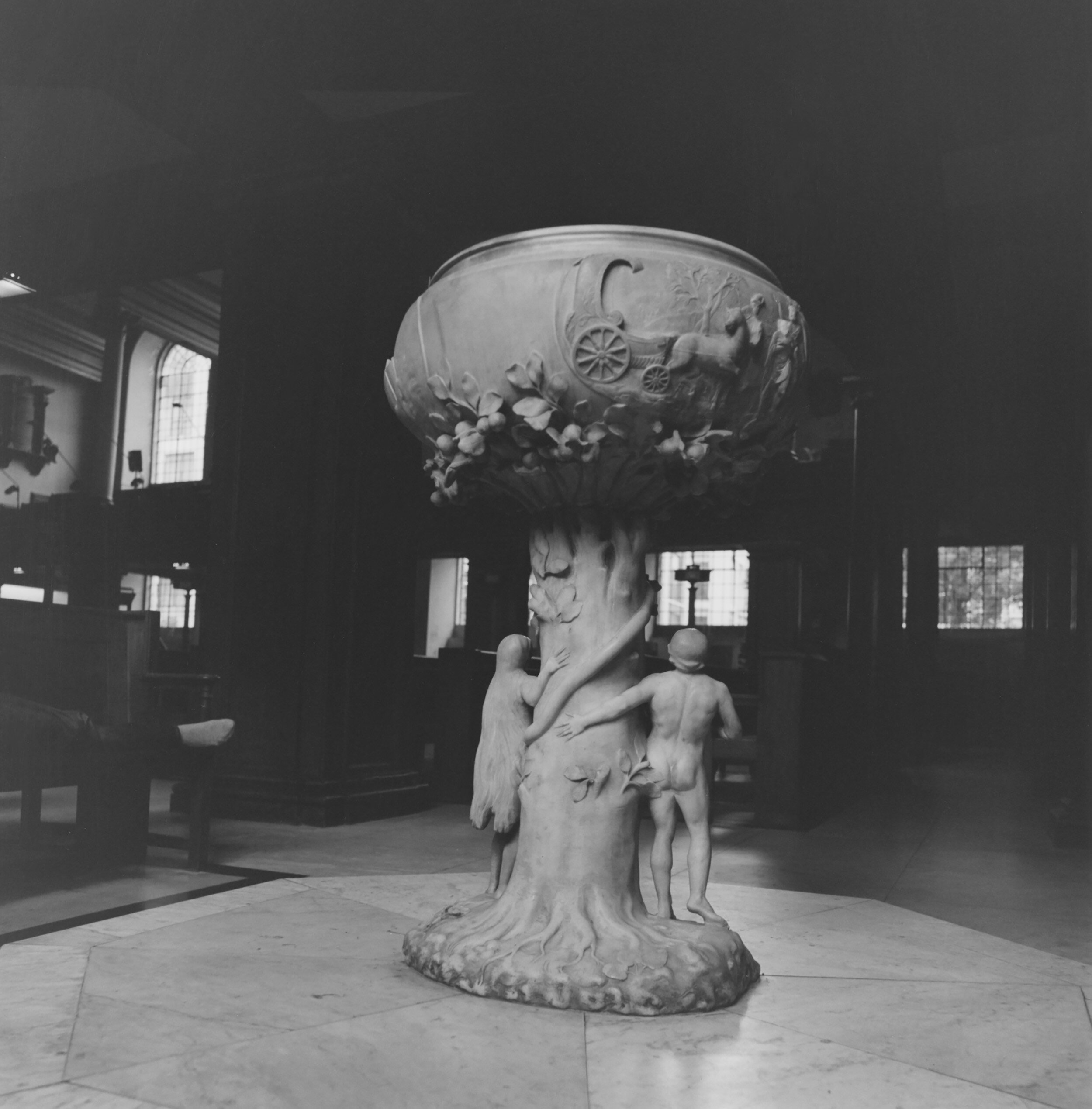
Quobna Ottabah Cugoano (born 1757) was an anti-slavery author and activist. As a child, he was kidnapped by slave-traders and sold into slavery at the age of 13 in present-day Ghana. Cugoano was shipped to Grenada in 1772 and purchased by an English merchant who took him to England, where he was freed. Cugoano was baptized “John Stuart” at St James’s Church, Piccadilly on August 20, 1773.

The Nell Gwynn House, Whiteheads Grove, South Kensington, is the site of the former home of British abolitionist George Thompson, who Douglass stayed with for a time in 1846, while lecturing in London on the horrors of the slave trade. This site now an apartment building and has a blue heritage plaque commemorating Douglass’s British and Irish abolition speaking tour of 1845-47.

The West India Dock Company built the docks for the import of sugar, rum, and coffee from the Caribbean. Opened in 1802, the docks were called ‘the largest feat of civil engineering since the building of the pyramids’.
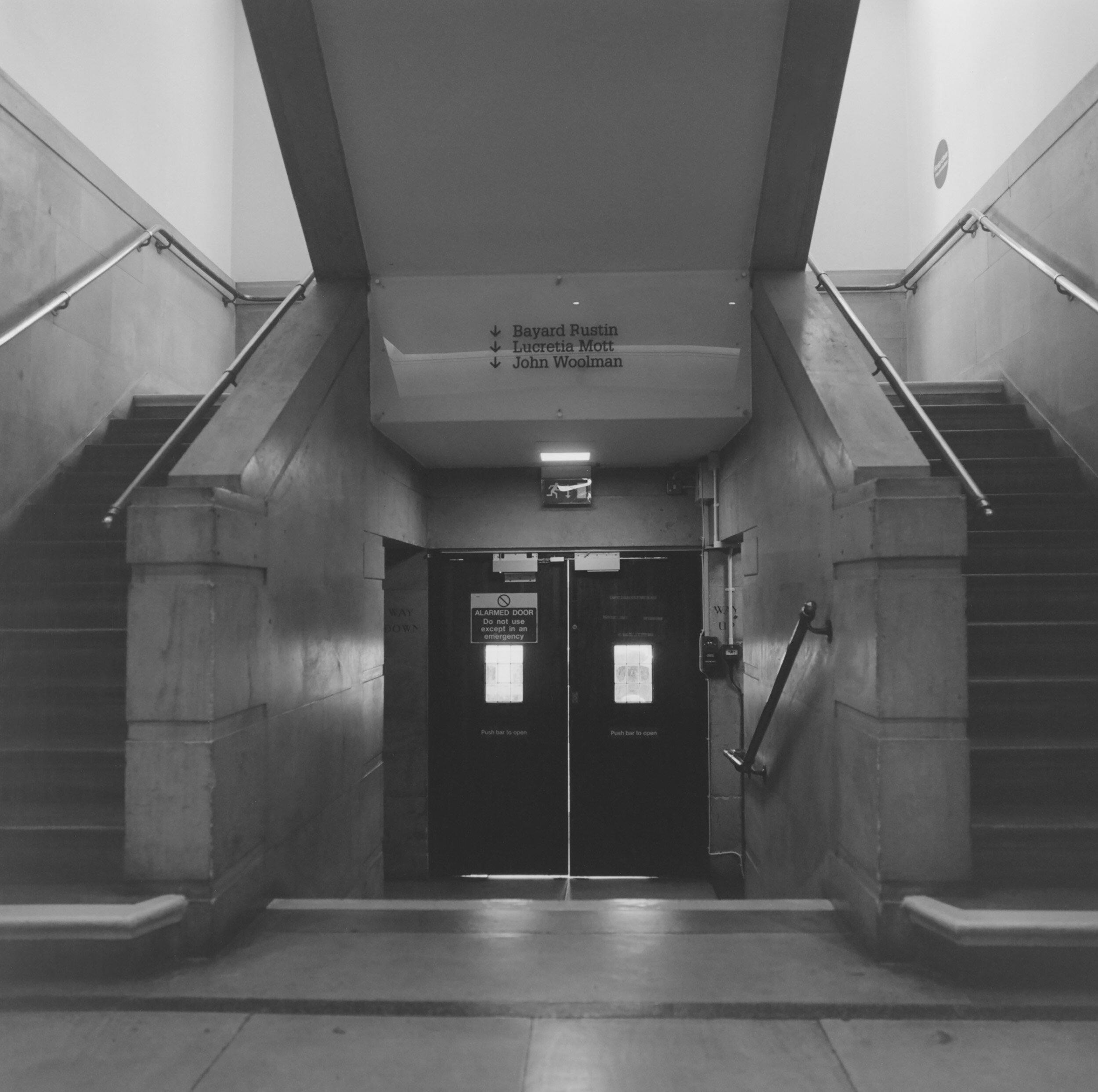
Some clergymen used Christian scriptures to justify slavery, others were studying the bible to find references to help end the practice. Although evangelicals tend to receive most of the credit for this, the origins of Christian abolitionism can be traced to the late 17th century and the Religious Society of Friends or 'Quakers'.
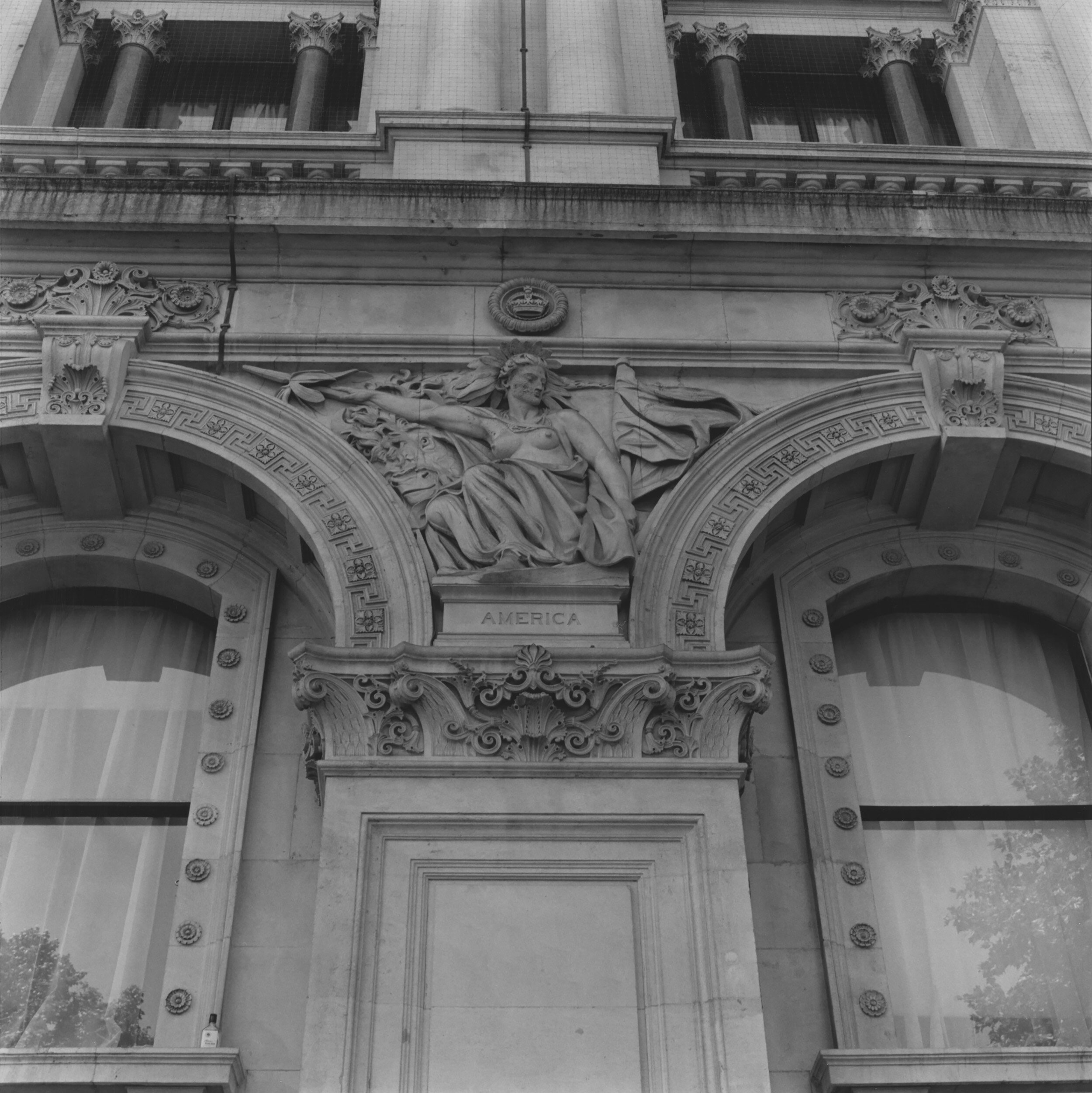
The Foreign Office was formed in March 1782 by combining the Southern and Northern Departments of the Secretary of State, each of which covered both foreign and domestic affairs in their parts of the Kingdom. The two departments' foreign affairs responsibilities became the Foreign Office.

Coffee houses stood here in earlier times where the business of insuring and financing vessels engaged in the slave trade was the principal business conducted during coffee drinking.
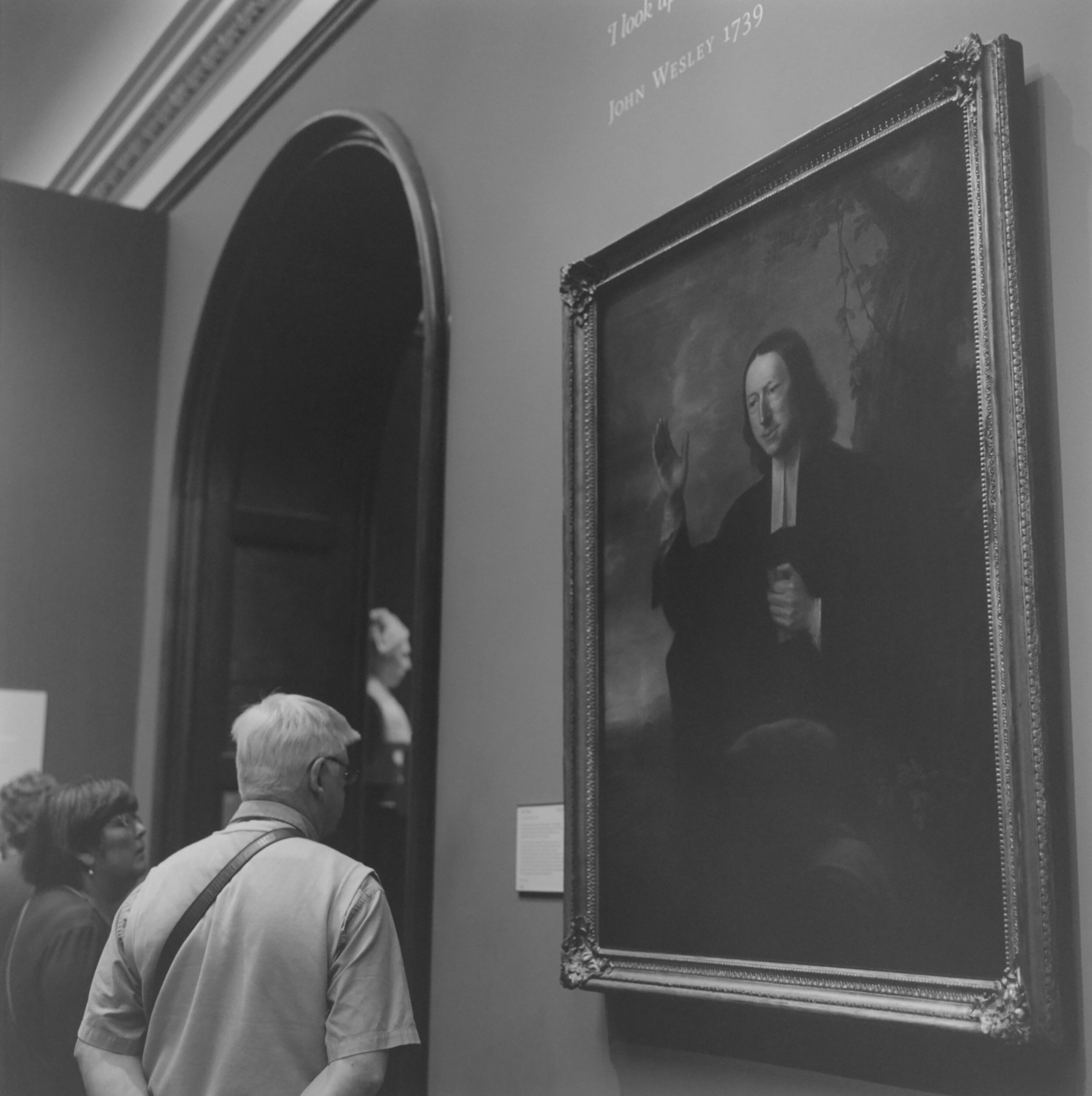
A visitor gazes upon the portrait of John Wesley (1703-1791), English cleric, theologian, and evangelist who was a leader of a revival movement within the Church of England known as Methodism. He became a strong campaigner for the abolition of slavery even before it aroused public interest. He first came into contact with Slavery when he went to preach in the colony of Georgia in the US from 1736 to 1737.
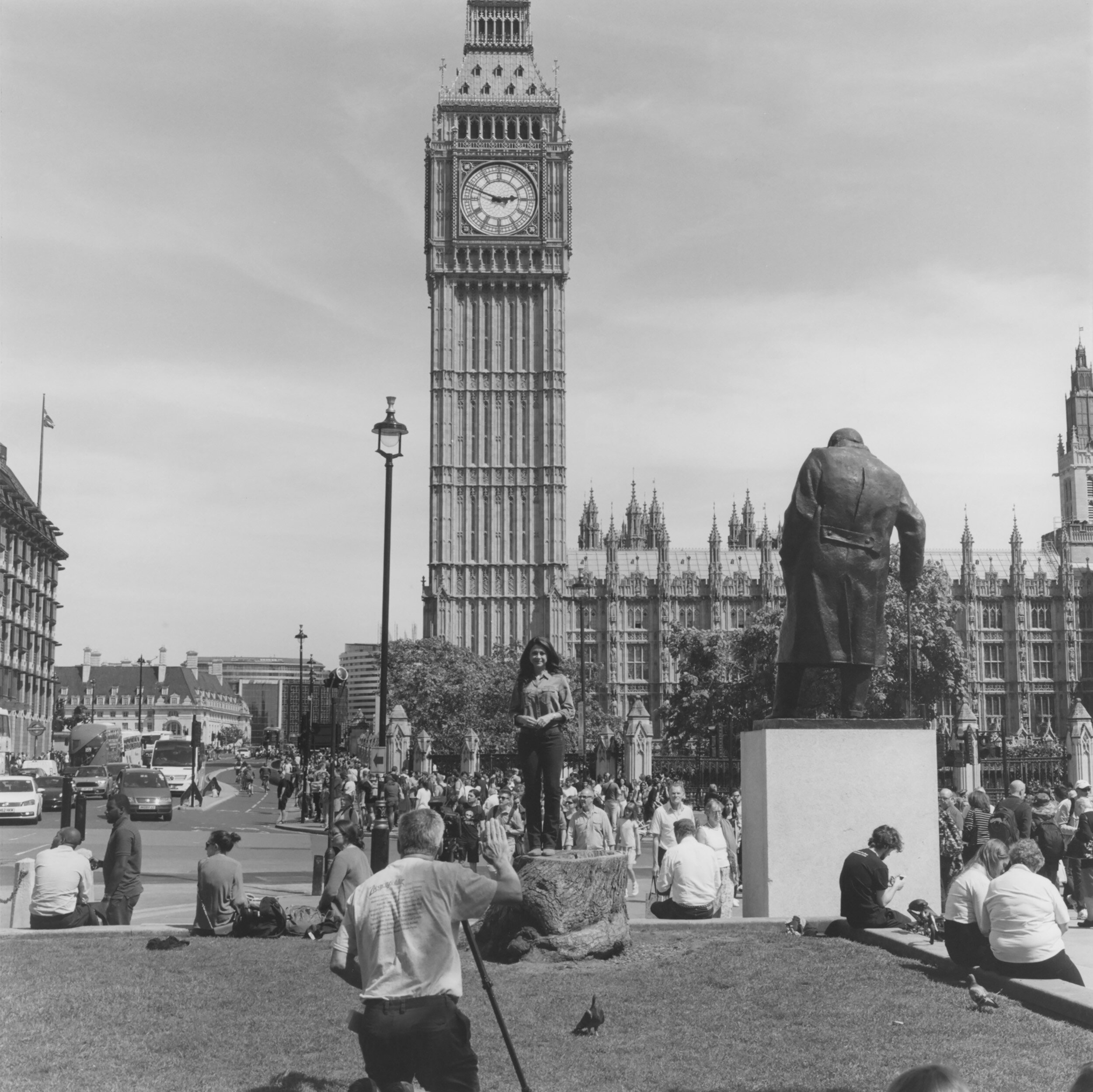
The Houses of Parliament or The Palace of Westminster has changed dramatically over the course of nearly a thousand years of its history. Transformed from royal residence to the home of modern democracy, the architecture and cultural collections have continually evolved.
Throughout the 17th and 18th centuries, Parliament significantly shaped the progress and development of the transatlantic slave system. The Act of Parliament to abolish the British slave trade, passed on 25 March 1807, was the culmination of one of the first and most successful public campaigns in history.
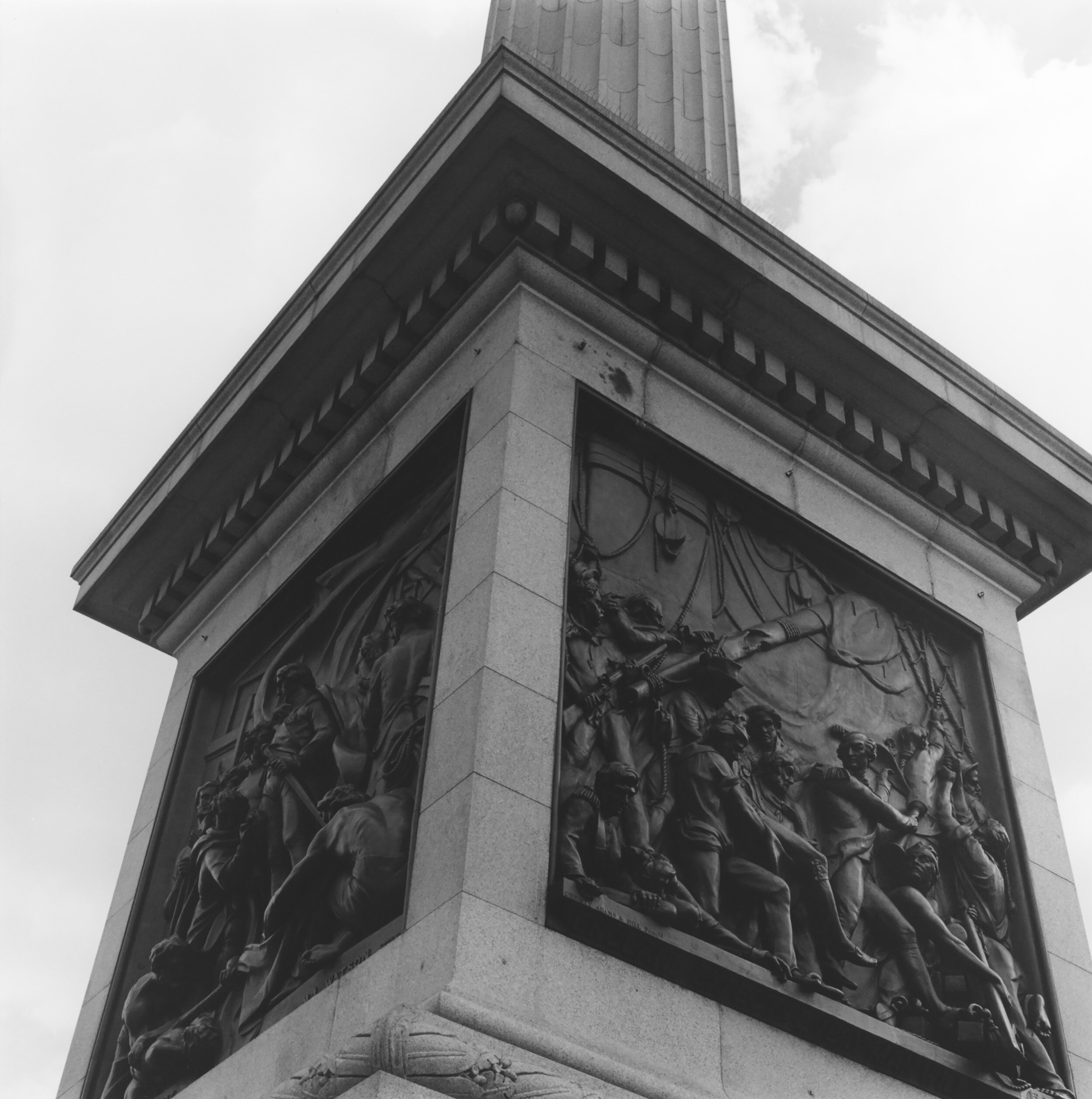
The pedestal of Nelson’s Column is decorated with four bronze relief panels, each 18 feet square, which was cast from captured French guns. They depict the Battle of Cape St Vincent, the Battle of the Nile, the Battle of Copenhagen and the Death of Nelson at Trafalgar. This panel depicts Nelson immediately after receiving his mortal wound; sailors to the left take aim at the marksman who dealt the blow including a black marine positioned at the far left of the panel. Engraved at the base of the panel. “England expects every man will do his duty. “ - Lord Nelson
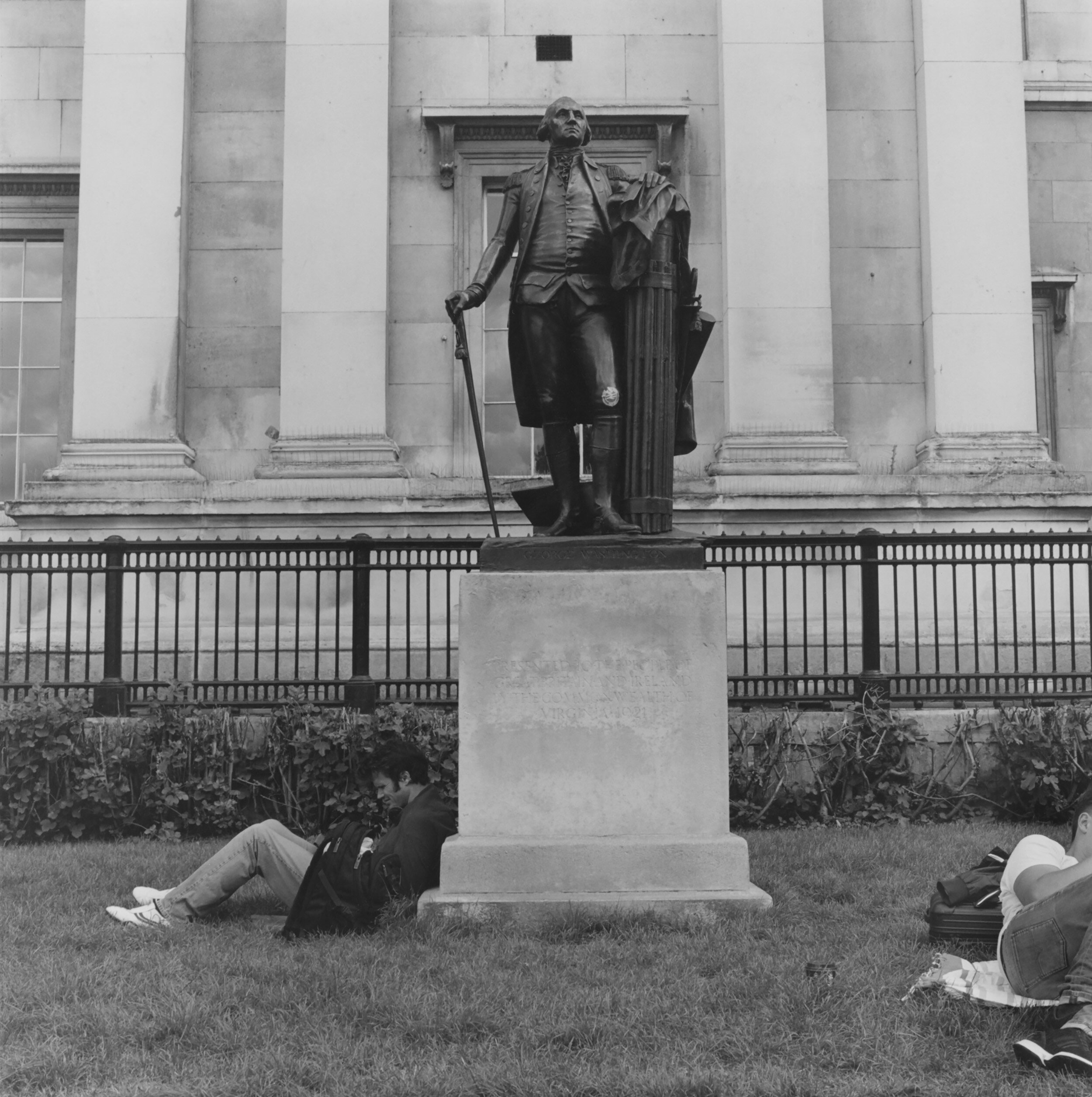
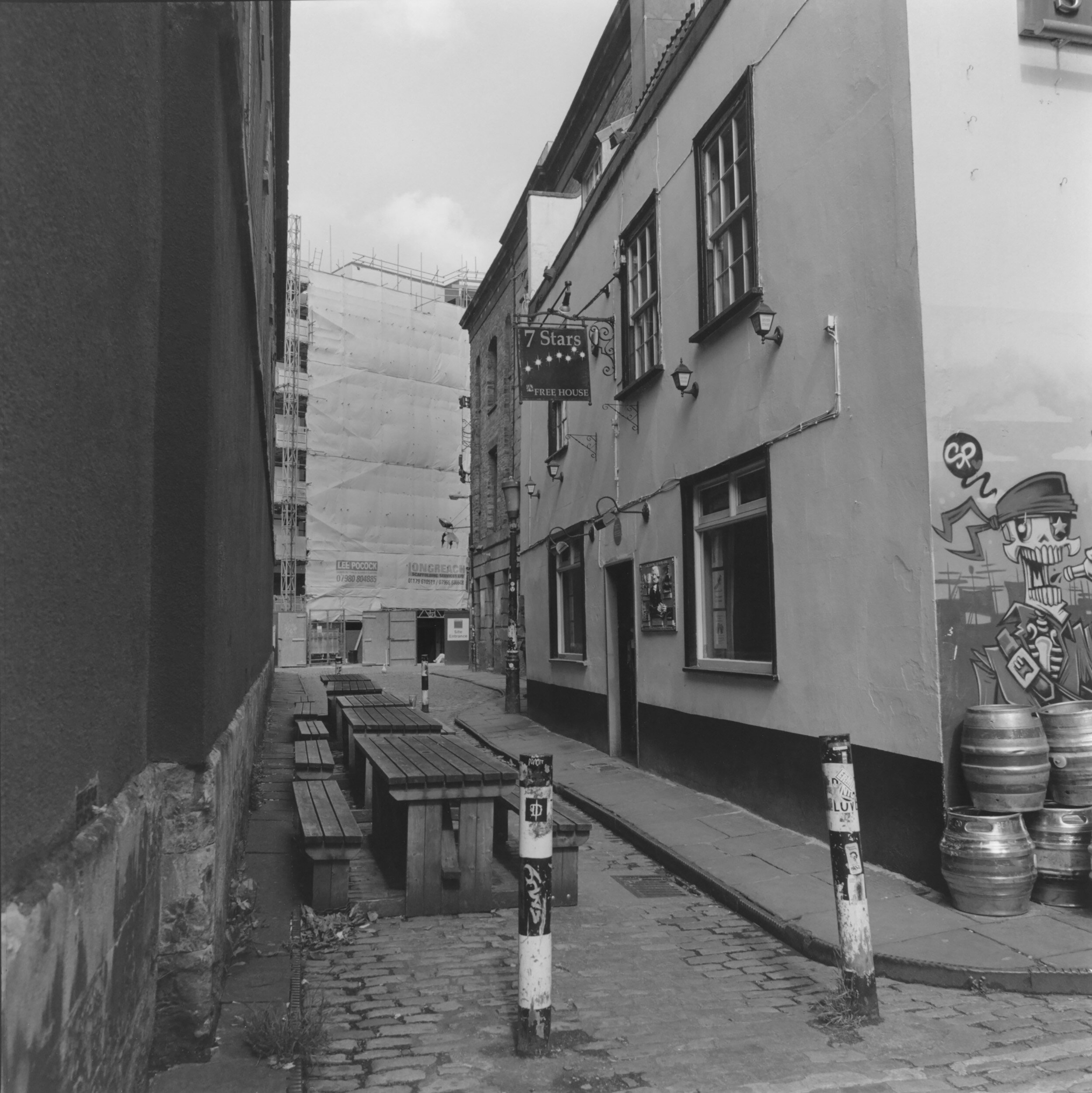
The Seven Stars Pub in Bristol, UK is a major historical place in Britain because of its abolitionist history. The pub dates back to at least 1697. Its prominence dates to Reverend Thomas Clarkson who visited and gathered evidence with the proprietor of the Pub for anti-slavery activist William Wilberforce. The resulting findings were crucial to changing public opinion, which was initially for the plight of British seaman conscripted to join slave voyages against their will, but then shifted to the enslaved Africans. Peter Linebaugh, a Bristol historian noted that the meaning of the seven stars constellation in America meant that “ the Seven Stars (or ‘Drinking Gourd’)” played a major part in the freeing of slaves. The “Drinking Gourd” is a famous coded Slavery song (‘pilot verse’) that gave freedom-seekers the directions to the North and safety.
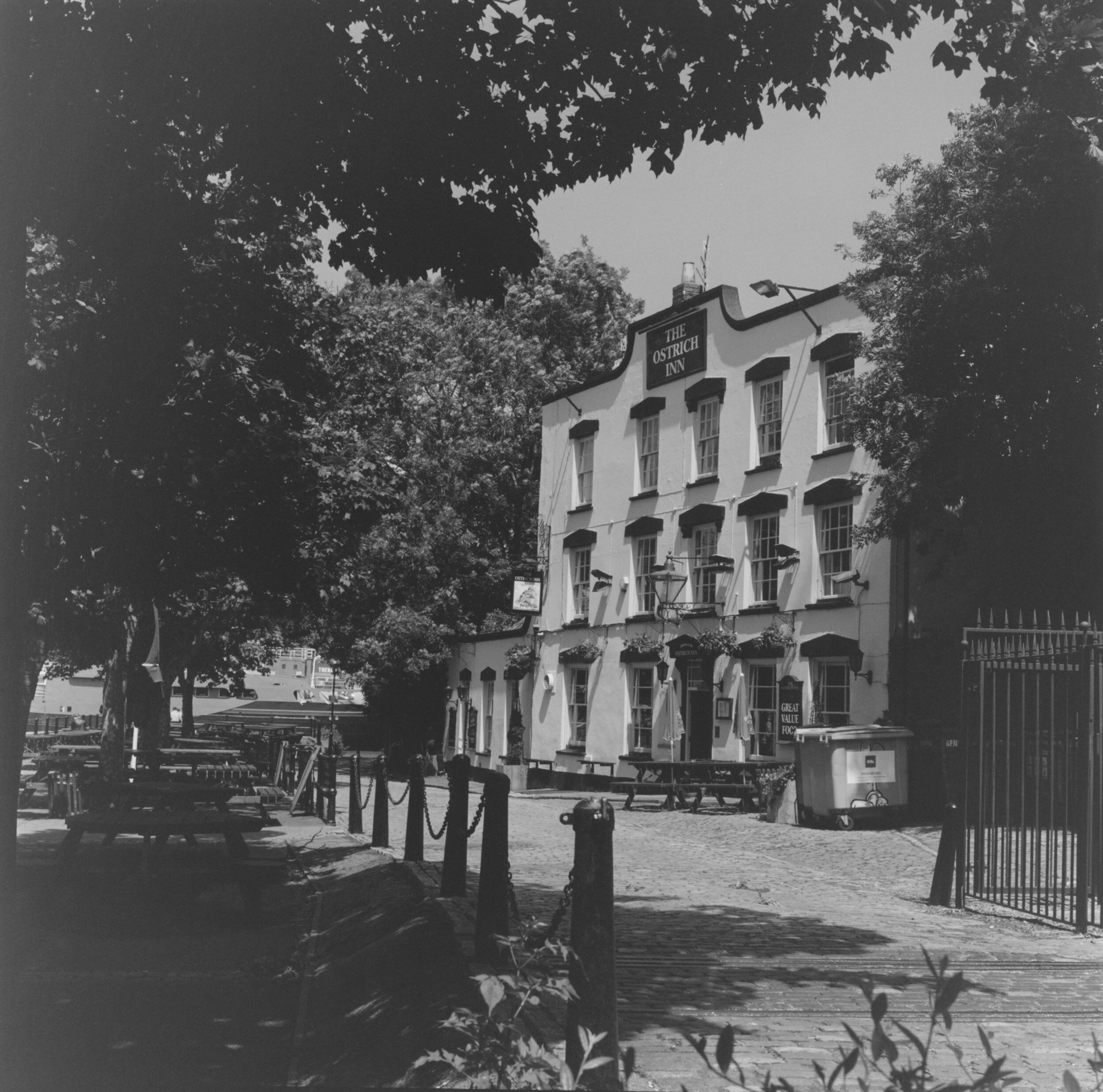
The Ostrich Inn and Pub located on lower Guinea Street Harbor Side in Bristol, UK dates back to at least 1745. It is one of the pubs used by the sailors, shipyard and dockside workers and merchants who worked in the Port of Bristol during the time of the slave trade. One of the Inn’s walls has been partly knocked down so that visitors can see part of the caves under Redcliffe. These caves were created by mining sand needed to make glass beads used by slave traders in Bristol to purchase slaves in West Africa that were in turn sold in the New World for purchase and or trade to complete the Triangle in the slave trade.
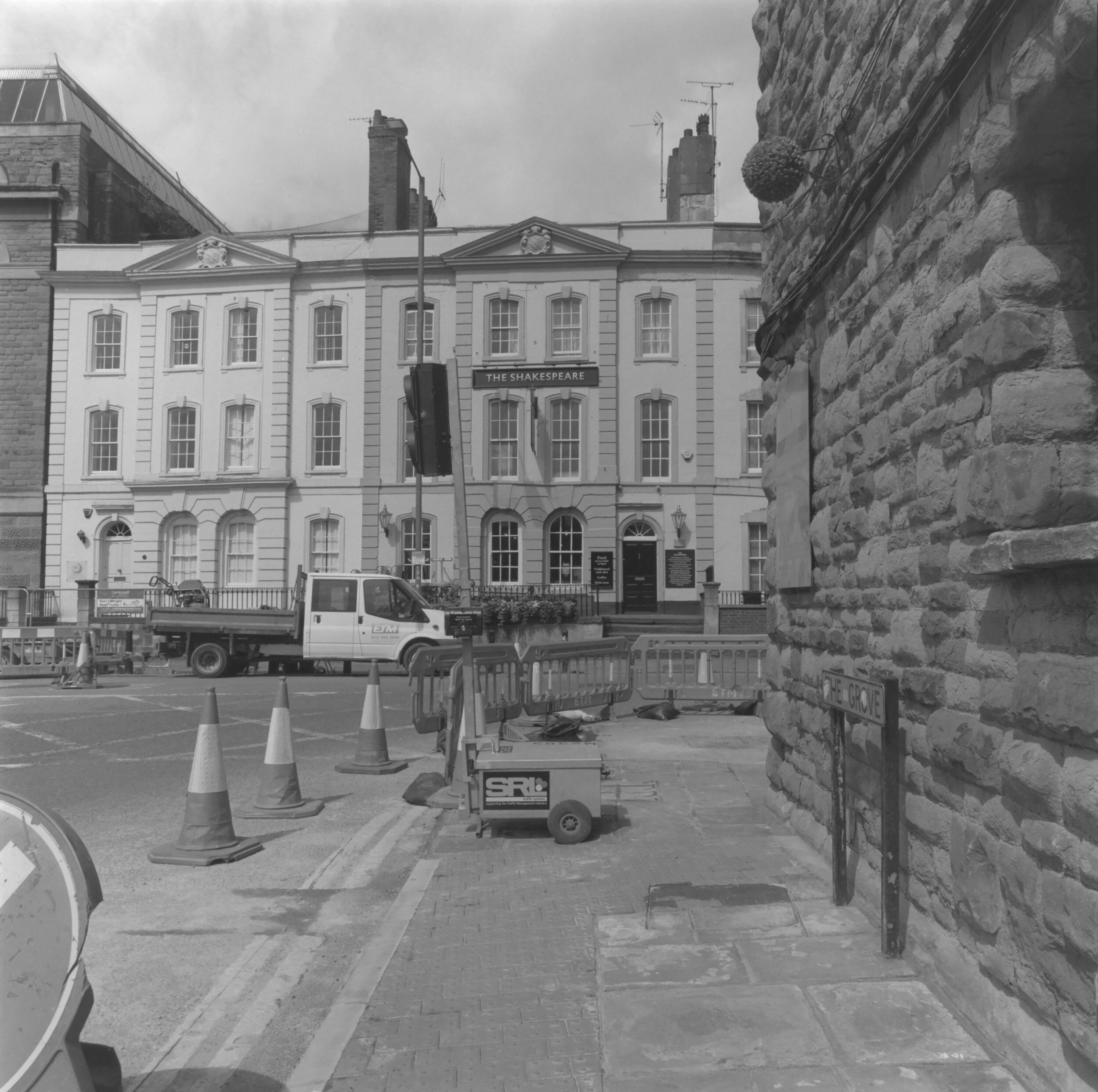
This street was built in the early 1700s and the Shakespeare public house is one of the few buildings, which has survived from then. The Shakespeare Pub was part of a terrace of houses built for Bristol slaving merchants, Henry Combe and John Becher. Both men also owned slave plantations in the West Indies.

Colston (1636-1721) was the son of a prosperous Bristol merchant; until recently, Colston's involvement in the slave trade, the source of much of the money, which he bestowed to Bristol, went largely unremarked. Since then there has been growing interest in Bristol's role in the 'triangular trade', which saw ships leave Bristol filled with goods to purchase slaves, carry those slaves to West Indies plantations, and return to Bristol with sugar. Although Colston's principal connection with the slave trade was through the London-based Royal African Company, he has come to be seen as the pre-eminent representative of this aspect of Bristol's history.

The early Methodists were frequently attacked by mobs. The lack of windows on the ground floor was a safety measure against such attack. The building was also designed to make it difficult for any mob that broke in to reach the preacher quickly - witness the limited access to the pulpit. The chapel today is as it would have been in 1748 except for the central block of pews that are not pictured.
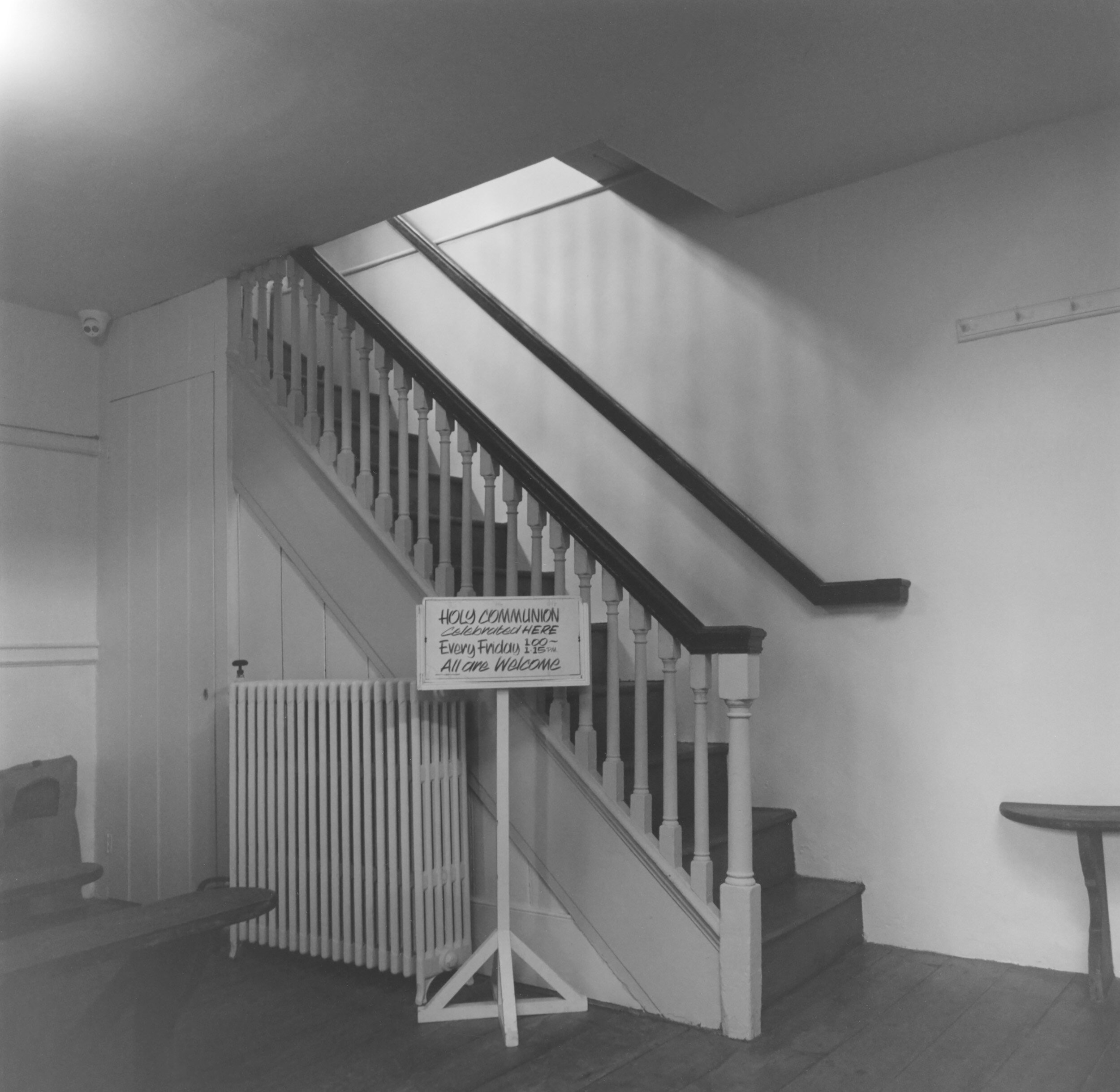
The original New Room was too small and not built well enough so, in 1748, it was rebuilt and doubled in size. This included creating a suite of rooms above the main room for use by John Wesley and other preachers. Many of the early Methodist Conferences were held here. Its location in Bristol played a significant role in Methodism’s increasing involvement in America and in the movement’s anti-slavery campaign.
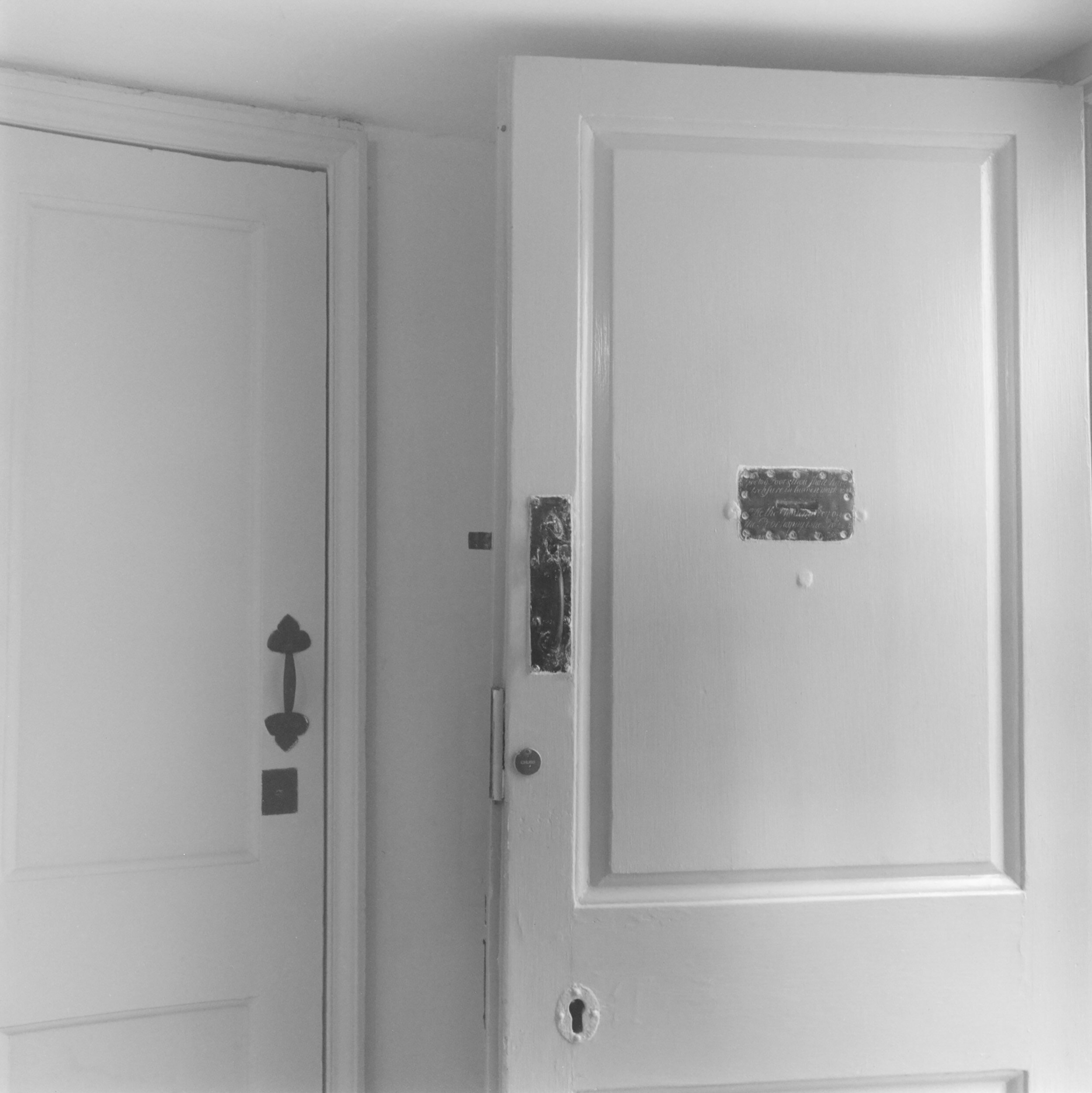
John Wesley (1703-1791) was asked by the members of two religious societies in Bristol to create “a new room” where they could meet. The resulting building served many functions because Wesley encouraged the religious society members to offer food and clothing to the poor, run a school for children, arrange visits to the nearby prison, and help the sick by running a free medical dispensary.
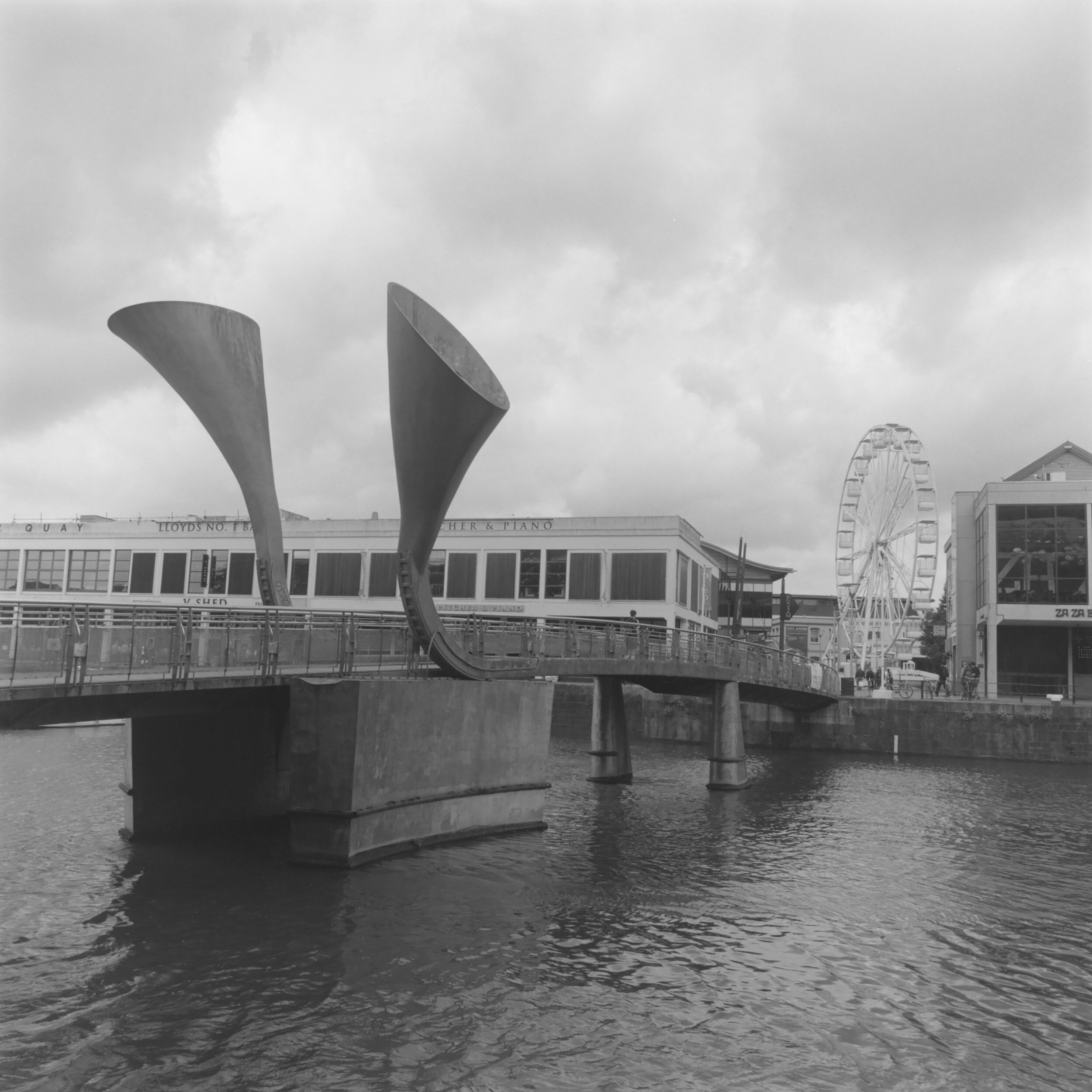
The bridge is named after Pero, also known as Pero Jones, who lived from around 1753 to 1798, arriving in Bristol from the Caribbean island of Nevis in 1784, as the slave of the merchant John Pinney (1740-1818). Pero's Bridge is a pedestrian bascule bridge that spans St Augustine's Reach in Bristol Harbor. It links Queen Square and Millennium Square over the tidal waters of the Avon and the Frome that were diverted in 1809 to create a floating, or tideless, harbor with a constant water depth.
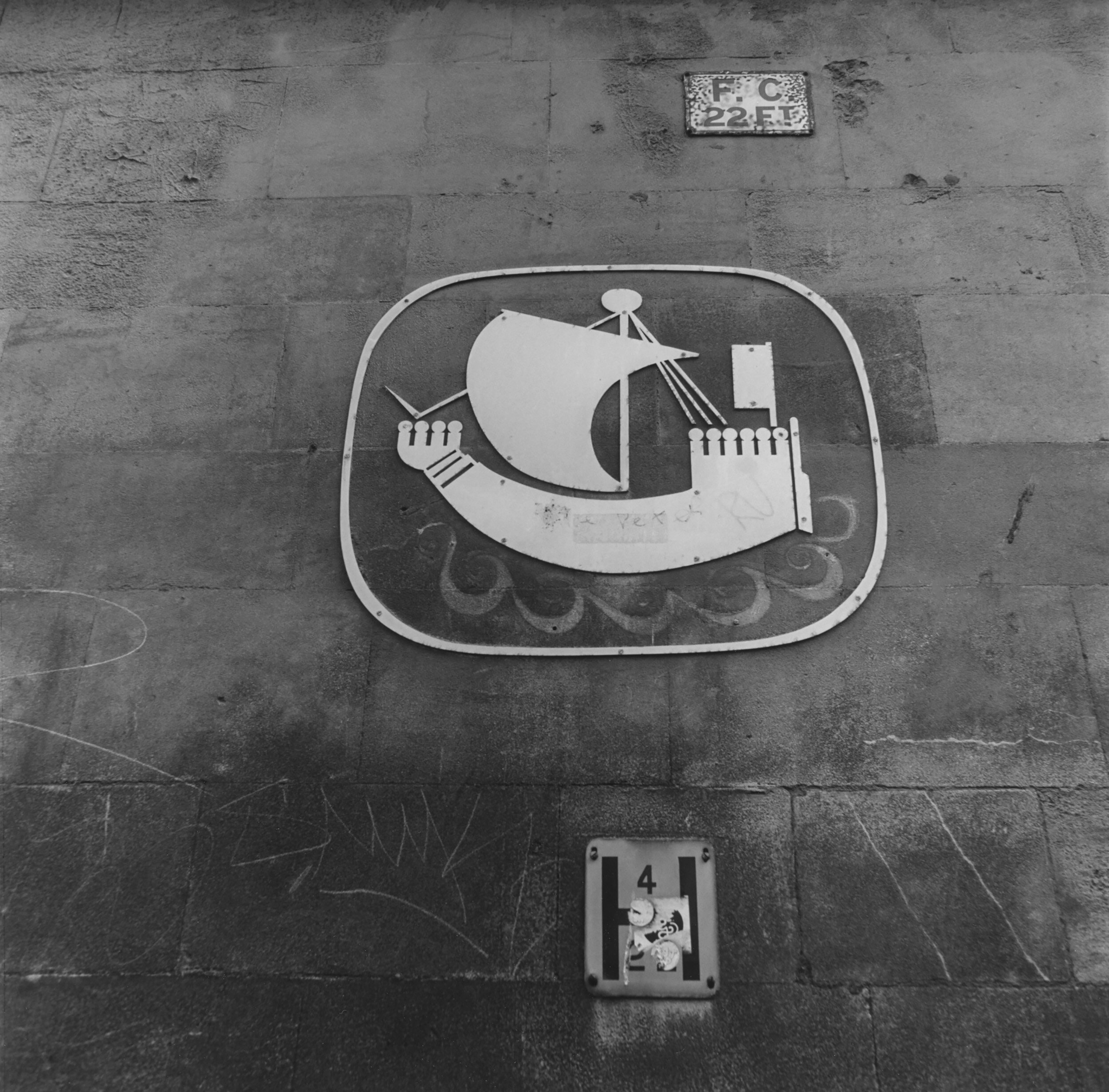
Bristol located in the South West of England, on the River Avon, which flows into the Severn Estuary. Because of its location on the Avon, it has been an important center for maritime trade for centuries. Bristol merchants were granted the right to trade in slaves in 1698 from then until the end of the Slave Trade in Britain in 1807, just over 2,100 Bristol ships set sail on slaving voyages. In 1809 tidal waters of the Avon and the Frome were diverted to create a floating, or tideless, harbor with a constant water depth greatly improving the efficiency of the port.
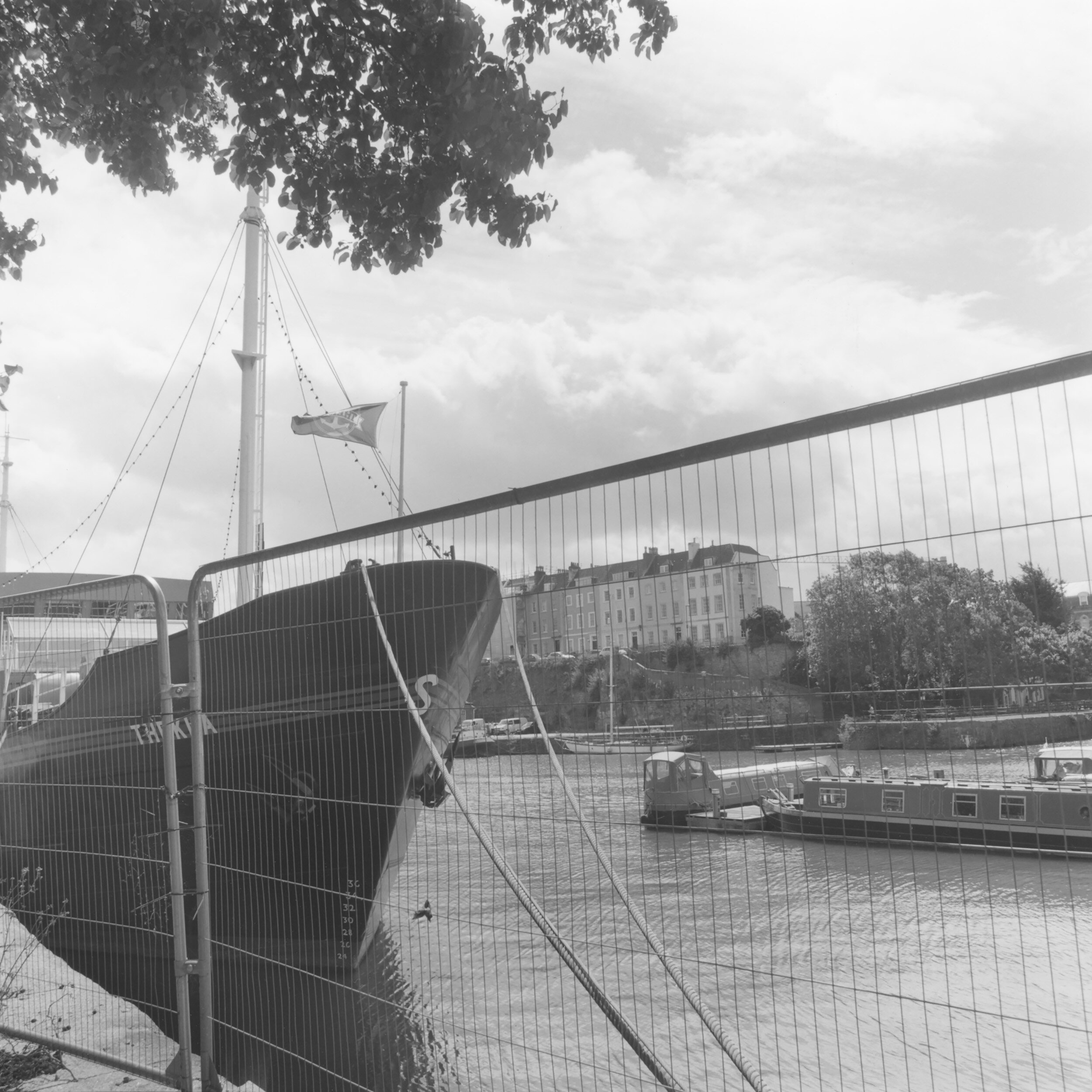
During the later 17th and the 18th centuries Bristol prospered as a processing center for sugar and tobacco imported from Britain’s colonies in the Americas, to whom it supplied textiles, pottery, glass, and other manufactured goods. The import of Jamaican sugar and cacao from West Africa led to the creation of the “sugar houses” of Bristol and to chocolate manufacturing.

William Gladstone (1809-1898) served four times as Prime Minister. He was a member of Parliament from 1832 to 1894. His views of slavery echoed those of his father, who was one of the largest slave owners in the British West Indies. Gladstone opposed the slave trade but wanted to improve the condition of the slaves before they were liberated. In 1833, he accepted emancipation because it was accompanied by a period of apprenticeship for the ex-slaves and by financial compensation for the planters.

When it opened in 1846, 40% of global trade passed through Liverpool by the beginning of the 19th century. The Dock engineer and architect Jesse Hartley conceived of Albert Dock, which was the first structure in the UK to be built from cast iron, brick and stone, with no structural wood. As a result, it was the first non-combustible warehouse system in the world with vast warehouses on its quaysides to securely store goods arriving from around the world. The speed with which ships unloaded and turned around was cut in half.
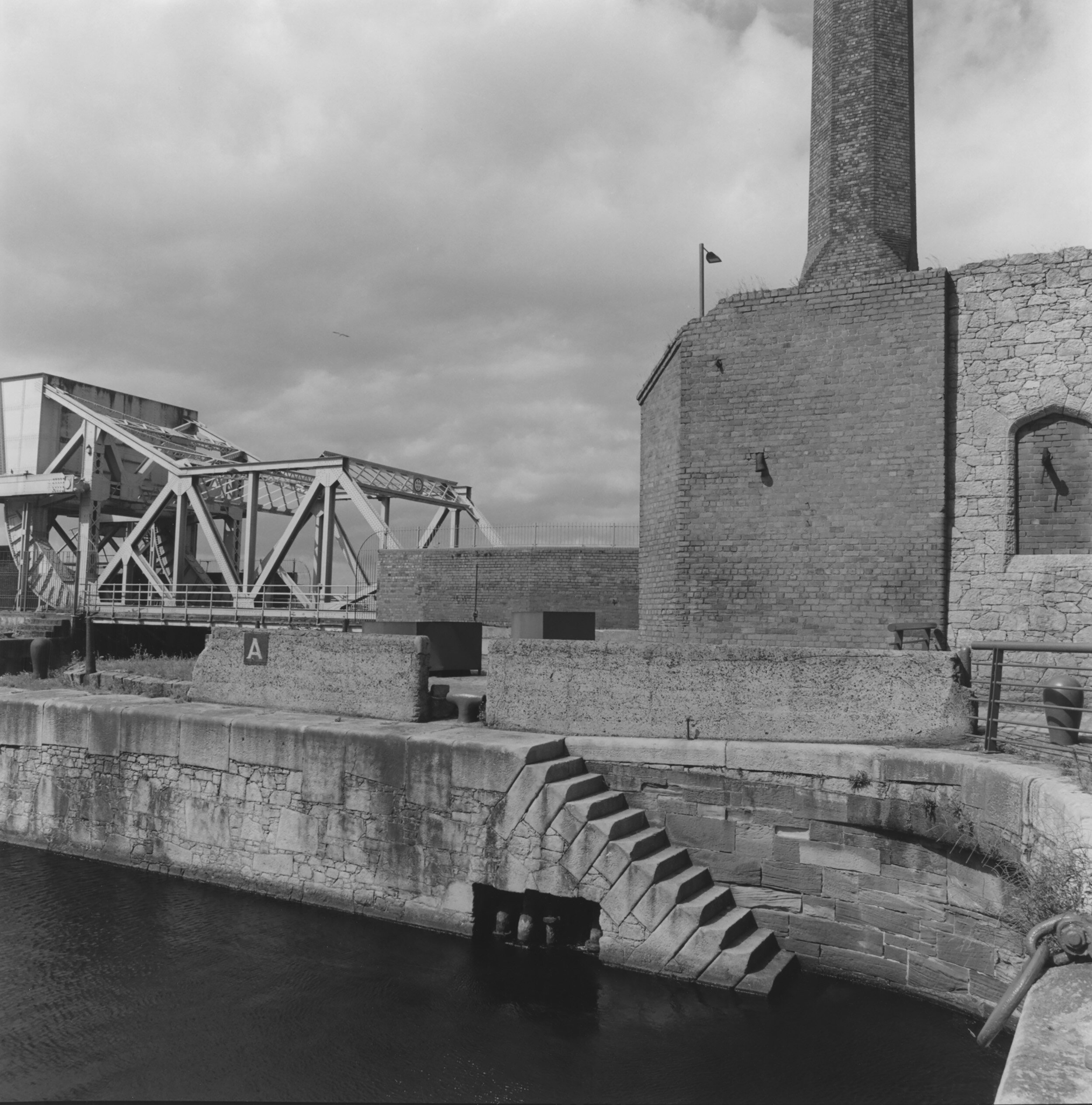
This dock opened in 1848 and it is the only one in Liverpool, which was built inland. The original quay warehouses are of a similar to those at Albert Dock. Traders could do deals before their import taxes were due; hydraulic cranes hauled heavy cargoes across the flagstones. Stanley Dock and the others designed by Hartley are part of Liverpool’s World Heritage UNESCO port site.
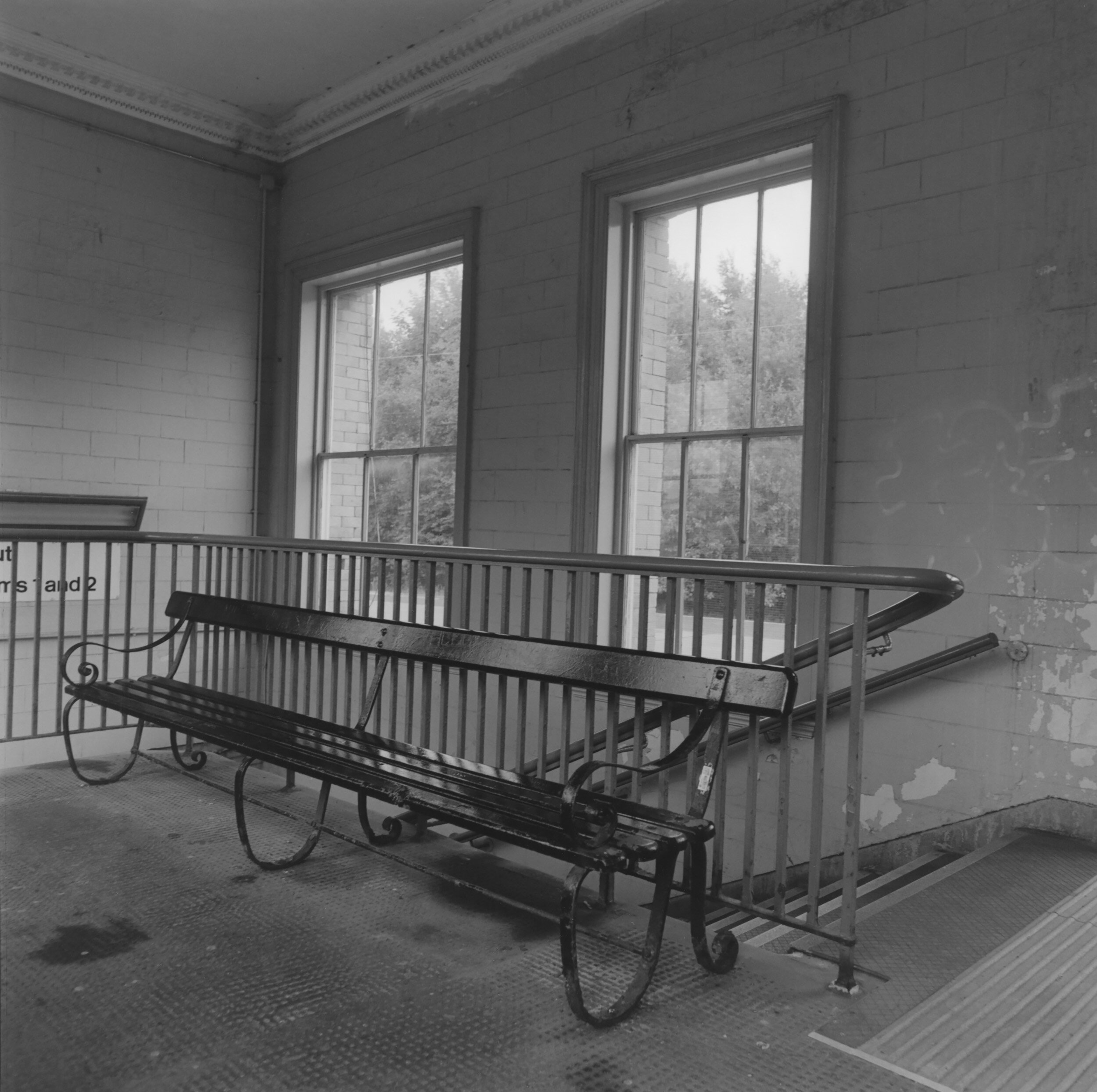
The Liverpool to Manchester Railway opened in September of 1836. The Edge Hill Station in Liverpool was built as a passenger station. It was founded in part by Liverpool Caribbean plantation owner families. Although lauded as the first passenger railway in the world, its main use was to transport slave produced cotton to the mills of Lancashire.
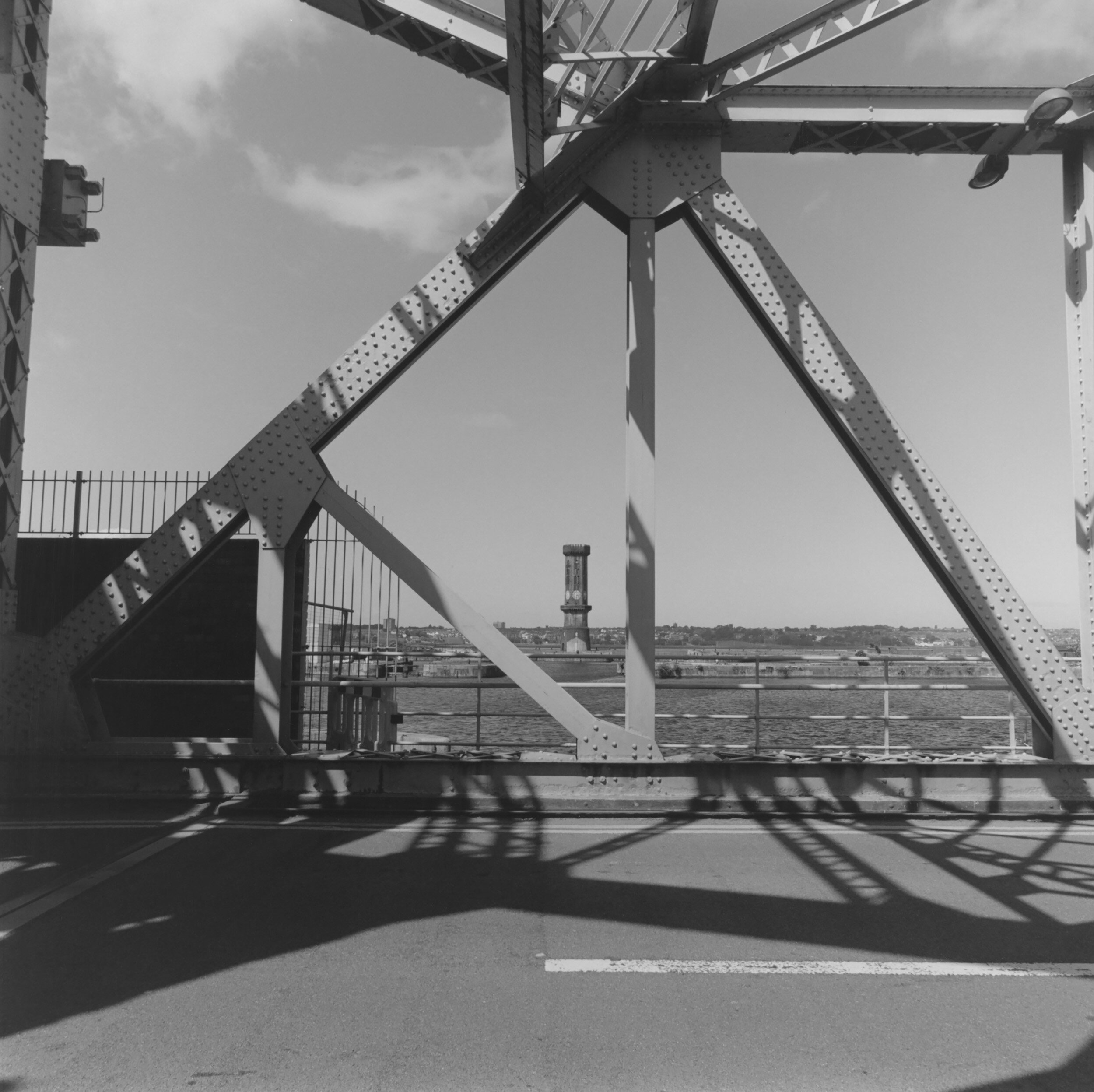
This rolling lift bridge allows Regent Street traffic to pass over the channel connecting Stanley Dock to Collingwood Dock. In the distance is the Victoria Clock Tower of 1848 designed by Jesse Hartley, the architect of both docks. It was built to aid ship navigation into the port and to provide the correct time for ships.
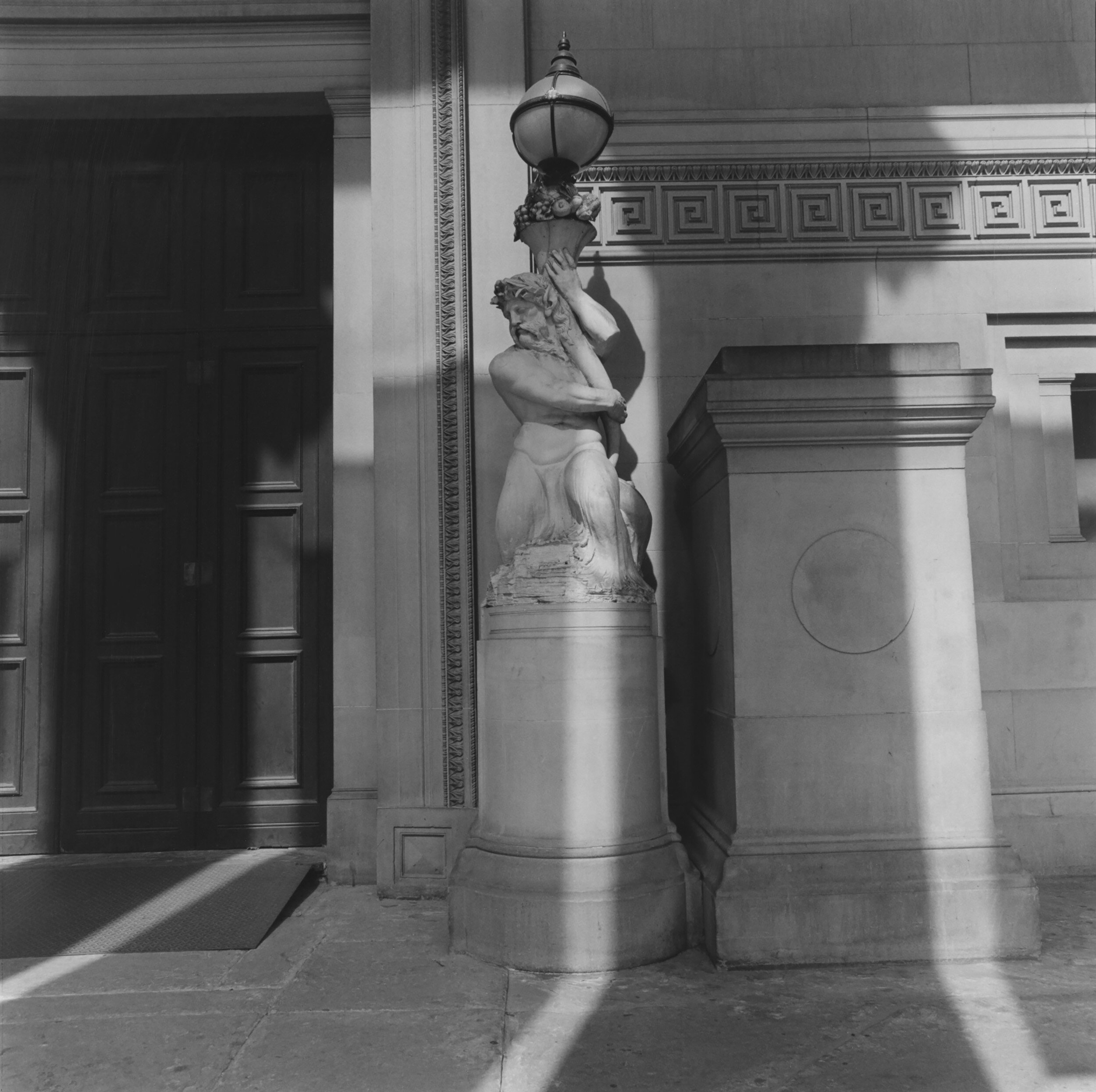
St George’s Hall detail of entryway opposite of Lime Street Railroad Station. The hall contains concert halls, law courts, galleries, and exhibition halls.

The view in this picture is from St George’s Place looking towards Lime Street Railroad Station. The building completed in 1854 and is considered one of the finest Neoclassical buildings in existence.

John Blackburne (1693-1786) is named on a list of merchants trading with Africa in 1752. He served as mayor in 1760. In 1790, John Blackburne Junior built his country house that, in 1844, would become the first high school for girls – Blackburne House. This building is now used as an education and training center for girls and women.
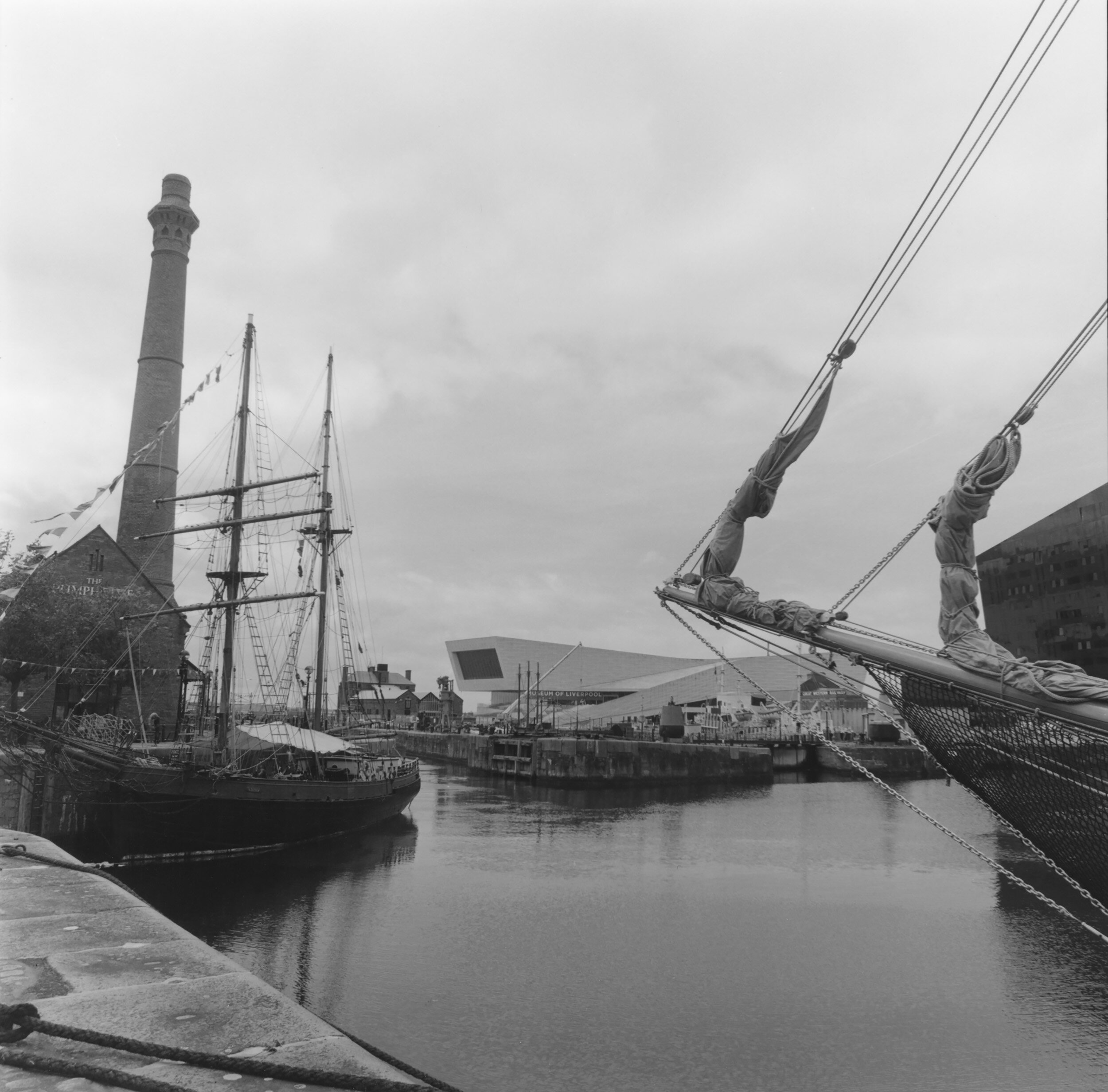
The Graving Docks (built in 1756 and 1765-69) are the oldest surviving part of the Liverpool dock system. Ships used in the slave trade were repaired here.
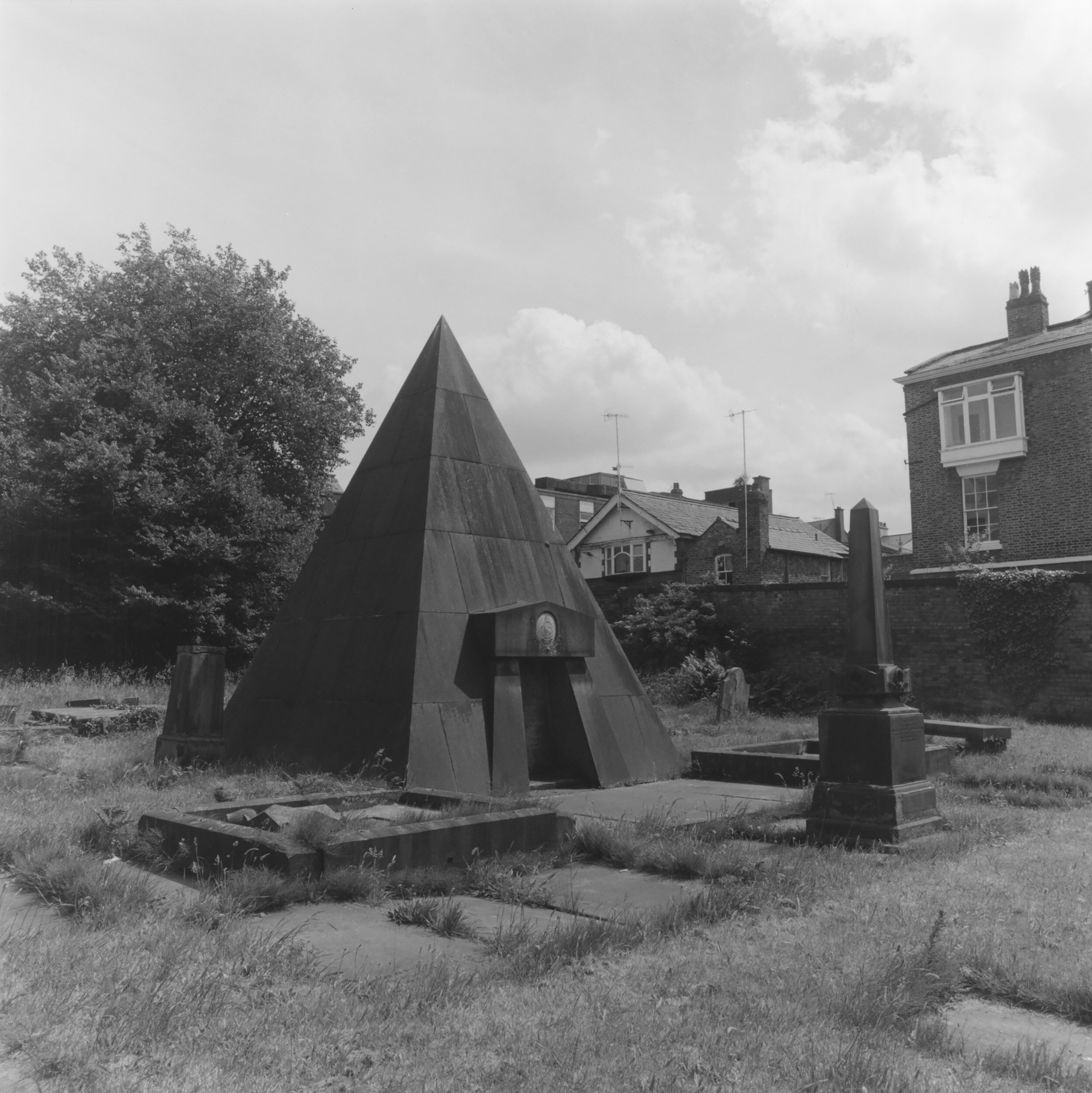
John Gladstone (1764-1851) father of William Gladstone, the Prime Minister, was one of the largest slaveholders in Britain. He built this church, which is located near his home on Rodney Street. In the churchyard is a monument in the form of a pyramid to James Mackenzie, a railway contractor and civil engineer, was completed in 1868.































Quobna Ottabah Cugoano (born 1757) was an anti-slavery author and activist. As a child, he was kidnapped by slave-traders and sold into slavery at the age of 13 in present-day Ghana. Cugoano was shipped to Grenada in 1772 and purchased by an English merchant who took him to England, where he was freed. Cugoano was baptized “John Stuart” at St James’s Church, Piccadilly on August 20, 1773.
The Nell Gwynn House, Whiteheads Grove, South Kensington, is the site of the former home of British abolitionist George Thompson, who Douglass stayed with for a time in 1846, while lecturing in London on the horrors of the slave trade. This site now an apartment building and has a blue heritage plaque commemorating Douglass’s British and Irish abolition speaking tour of 1845-47.
The West India Dock Company built the docks for the import of sugar, rum, and coffee from the Caribbean. Opened in 1802, the docks were called ‘the largest feat of civil engineering since the building of the pyramids’.
Some clergymen used Christian scriptures to justify slavery, others were studying the bible to find references to help end the practice. Although evangelicals tend to receive most of the credit for this, the origins of Christian abolitionism can be traced to the late 17th century and the Religious Society of Friends or 'Quakers'.
The Foreign Office was formed in March 1782 by combining the Southern and Northern Departments of the Secretary of State, each of which covered both foreign and domestic affairs in their parts of the Kingdom. The two departments' foreign affairs responsibilities became the Foreign Office.
Coffee houses stood here in earlier times where the business of insuring and financing vessels engaged in the slave trade was the principal business conducted during coffee drinking.
A visitor gazes upon the portrait of John Wesley (1703-1791), English cleric, theologian, and evangelist who was a leader of a revival movement within the Church of England known as Methodism. He became a strong campaigner for the abolition of slavery even before it aroused public interest. He first came into contact with Slavery when he went to preach in the colony of Georgia in the US from 1736 to 1737.
The Houses of Parliament or The Palace of Westminster has changed dramatically over the course of nearly a thousand years of its history. Transformed from royal residence to the home of modern democracy, the architecture and cultural collections have continually evolved.
Throughout the 17th and 18th centuries, Parliament significantly shaped the progress and development of the transatlantic slave system. The Act of Parliament to abolish the British slave trade, passed on 25 March 1807, was the culmination of one of the first and most successful public campaigns in history.
The pedestal of Nelson’s Column is decorated with four bronze relief panels, each 18 feet square, which was cast from captured French guns. They depict the Battle of Cape St Vincent, the Battle of the Nile, the Battle of Copenhagen and the Death of Nelson at Trafalgar. This panel depicts Nelson immediately after receiving his mortal wound; sailors to the left take aim at the marksman who dealt the blow including a black marine positioned at the far left of the panel. Engraved at the base of the panel. “England expects every man will do his duty. “ - Lord Nelson
The Seven Stars Pub in Bristol, UK is a major historical place in Britain because of its abolitionist history. The pub dates back to at least 1697. Its prominence dates to Reverend Thomas Clarkson who visited and gathered evidence with the proprietor of the Pub for anti-slavery activist William Wilberforce. The resulting findings were crucial to changing public opinion, which was initially for the plight of British seaman conscripted to join slave voyages against their will, but then shifted to the enslaved Africans. Peter Linebaugh, a Bristol historian noted that the meaning of the seven stars constellation in America meant that “ the Seven Stars (or ‘Drinking Gourd’)” played a major part in the freeing of slaves. The “Drinking Gourd” is a famous coded Slavery song (‘pilot verse’) that gave freedom-seekers the directions to the North and safety.
The Ostrich Inn and Pub located on lower Guinea Street Harbor Side in Bristol, UK dates back to at least 1745. It is one of the pubs used by the sailors, shipyard and dockside workers and merchants who worked in the Port of Bristol during the time of the slave trade. One of the Inn’s walls has been partly knocked down so that visitors can see part of the caves under Redcliffe. These caves were created by mining sand needed to make glass beads used by slave traders in Bristol to purchase slaves in West Africa that were in turn sold in the New World for purchase and or trade to complete the Triangle in the slave trade.
This street was built in the early 1700s and the Shakespeare public house is one of the few buildings, which has survived from then. The Shakespeare Pub was part of a terrace of houses built for Bristol slaving merchants, Henry Combe and John Becher. Both men also owned slave plantations in the West Indies.
Colston (1636-1721) was the son of a prosperous Bristol merchant; until recently, Colston's involvement in the slave trade, the source of much of the money, which he bestowed to Bristol, went largely unremarked. Since then there has been growing interest in Bristol's role in the 'triangular trade', which saw ships leave Bristol filled with goods to purchase slaves, carry those slaves to West Indies plantations, and return to Bristol with sugar. Although Colston's principal connection with the slave trade was through the London-based Royal African Company, he has come to be seen as the pre-eminent representative of this aspect of Bristol's history.
The early Methodists were frequently attacked by mobs. The lack of windows on the ground floor was a safety measure against such attack. The building was also designed to make it difficult for any mob that broke in to reach the preacher quickly - witness the limited access to the pulpit. The chapel today is as it would have been in 1748 except for the central block of pews that are not pictured.
The original New Room was too small and not built well enough so, in 1748, it was rebuilt and doubled in size. This included creating a suite of rooms above the main room for use by John Wesley and other preachers. Many of the early Methodist Conferences were held here. Its location in Bristol played a significant role in Methodism’s increasing involvement in America and in the movement’s anti-slavery campaign.
John Wesley (1703-1791) was asked by the members of two religious societies in Bristol to create “a new room” where they could meet. The resulting building served many functions because Wesley encouraged the religious society members to offer food and clothing to the poor, run a school for children, arrange visits to the nearby prison, and help the sick by running a free medical dispensary.
The bridge is named after Pero, also known as Pero Jones, who lived from around 1753 to 1798, arriving in Bristol from the Caribbean island of Nevis in 1784, as the slave of the merchant John Pinney (1740-1818). Pero's Bridge is a pedestrian bascule bridge that spans St Augustine's Reach in Bristol Harbor. It links Queen Square and Millennium Square over the tidal waters of the Avon and the Frome that were diverted in 1809 to create a floating, or tideless, harbor with a constant water depth.
Bristol located in the South West of England, on the River Avon, which flows into the Severn Estuary. Because of its location on the Avon, it has been an important center for maritime trade for centuries. Bristol merchants were granted the right to trade in slaves in 1698 from then until the end of the Slave Trade in Britain in 1807, just over 2,100 Bristol ships set sail on slaving voyages. In 1809 tidal waters of the Avon and the Frome were diverted to create a floating, or tideless, harbor with a constant water depth greatly improving the efficiency of the port.
During the later 17th and the 18th centuries Bristol prospered as a processing center for sugar and tobacco imported from Britain’s colonies in the Americas, to whom it supplied textiles, pottery, glass, and other manufactured goods. The import of Jamaican sugar and cacao from West Africa led to the creation of the “sugar houses” of Bristol and to chocolate manufacturing.
William Gladstone (1809-1898) served four times as Prime Minister. He was a member of Parliament from 1832 to 1894. His views of slavery echoed those of his father, who was one of the largest slave owners in the British West Indies. Gladstone opposed the slave trade but wanted to improve the condition of the slaves before they were liberated. In 1833, he accepted emancipation because it was accompanied by a period of apprenticeship for the ex-slaves and by financial compensation for the planters.
When it opened in 1846, 40% of global trade passed through Liverpool by the beginning of the 19th century. The Dock engineer and architect Jesse Hartley conceived of Albert Dock, which was the first structure in the UK to be built from cast iron, brick and stone, with no structural wood. As a result, it was the first non-combustible warehouse system in the world with vast warehouses on its quaysides to securely store goods arriving from around the world. The speed with which ships unloaded and turned around was cut in half.
This dock opened in 1848 and it is the only one in Liverpool, which was built inland. The original quay warehouses are of a similar to those at Albert Dock. Traders could do deals before their import taxes were due; hydraulic cranes hauled heavy cargoes across the flagstones. Stanley Dock and the others designed by Hartley are part of Liverpool’s World Heritage UNESCO port site.
The Liverpool to Manchester Railway opened in September of 1836. The Edge Hill Station in Liverpool was built as a passenger station. It was founded in part by Liverpool Caribbean plantation owner families. Although lauded as the first passenger railway in the world, its main use was to transport slave produced cotton to the mills of Lancashire.
This rolling lift bridge allows Regent Street traffic to pass over the channel connecting Stanley Dock to Collingwood Dock. In the distance is the Victoria Clock Tower of 1848 designed by Jesse Hartley, the architect of both docks. It was built to aid ship navigation into the port and to provide the correct time for ships.
St George’s Hall detail of entryway opposite of Lime Street Railroad Station. The hall contains concert halls, law courts, galleries, and exhibition halls.
The view in this picture is from St George’s Place looking towards Lime Street Railroad Station. The building completed in 1854 and is considered one of the finest Neoclassical buildings in existence.
John Blackburne (1693-1786) is named on a list of merchants trading with Africa in 1752. He served as mayor in 1760. In 1790, John Blackburne Junior built his country house that, in 1844, would become the first high school for girls – Blackburne House. This building is now used as an education and training center for girls and women.
The Graving Docks (built in 1756 and 1765-69) are the oldest surviving part of the Liverpool dock system. Ships used in the slave trade were repaired here.
John Gladstone (1764-1851) father of William Gladstone, the Prime Minister, was one of the largest slaveholders in Britain. He built this church, which is located near his home on Rodney Street. In the churchyard is a monument in the form of a pyramid to James Mackenzie, a railway contractor and civil engineer, was completed in 1868.